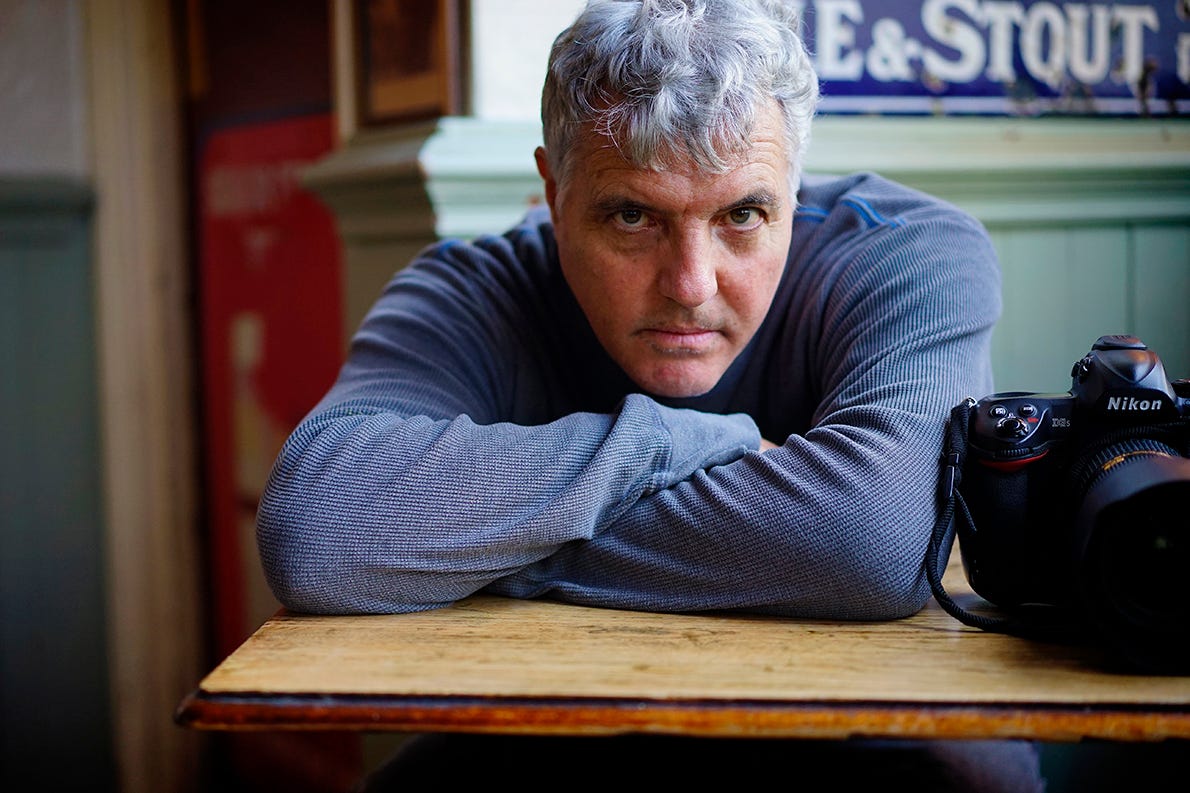The central theme surrounding Wayne Tippetts’ work is street photography. He has been observing and telling raw-urban stories since the 1980s, having started his career in both London and Jamaica. In 2008, Wayne expanded his passion for street photography by also shooting fashion and street-style, launching his own Fashion-blog, the streetstyleaesthetic.
Along with the growth of digitalization, came the rise of image search providers, mobile internet, and smartphones with quality cameras allowing easy and fast image upload in digital platforms. For instance, in one day there are 300 million images uploaded on Facebook, 52 million on Instagram, and 700 million shared on WhatsApp.
The fashion industry, being fundamentally an aesthetical and visual business, ends up being one of the main parties that benefit from the huge number of images available online. Since April 2019, RYDE has successfully produced 265 cases for Wayne’s fashion and journalistic work, while others are currently in the making.
We have interviewed Wayne Tippetts to get insights from his experience in digital photography since his early days of fashion blog, as well as his inputs on copyright infringement. Check it out:
The digital revolution has changed so much for our society. How do you think it affects creatives?
While the egalitarianism of the digital revolution has undoubtedly created more freedom and opportunities for creatives, it also comes with a price. Creatives work, and ideas are “out there” in this seemingly limitless digital infinity. And, along with the shift towards digital publishing and the abandoning of traditional print media, access to creatives work has never been easier. But without sufficient safeguards for protecting copyright and usage, it’s like the Wild West out there, pretty lawless.
When was the first time you experienced your pictures being used without permission? How did you deal with it?
When I first noticed my photos being used online without permission, it was in the early days of fashion blog from about 2009 onwards. I would ask for the photos to be removed if I was able to contact the person.
As someone working in the fashion industry, from where most of your infringements come from (news outlets, blogs, social media)?
Quite simply there is no doubt in my mind that there is a direct correlation between licensing of my street style fashion photos becoming less frequent as more media outlets moved online. It’s been a free for all approach for too long. I spoke to a journalist from the BBC recently about infringements and the opinion was that publications are not aware of the illegal use. I think that is a poor argument and I don’t buy it!
Although you are working mainly with Fashion Photography and Street Style, you also have photojournalistic work. Is there any difference between the amount of infringement in fashion and in photojournalism?
It’s hard to gauge the amount of infringement between my fashion work and my photojournalistic work. However, I can say that there is a lot more obfuscation and less transparent usage for my Jamaica work.

What are the main challenges you face as a single photographer?
The main challenges facing me as a photographer is the development of my revenue streams. The devaluing of creativity has meant that photo libraries no longer seem to be able to sell photos for a decent price, and clients want more and more for their money.
When did you decide to join an Images Rights Management Platform? How did you find RYDE and how the relationship started?
I was searching around for help with my infringements, and I discovered RYDE, who was just a start-up at the time. I started with a few images, and now I have over 10,000 images in their database and growing. The relationship is also growing, and they are certainly rewarding my creativity.
Do you perceive any growth of legal usage or fall of infringements after joining RYDE?
I don’t see any drop off yet in illegal use, but as more and more companies jump into the market, I predict the more recognized and visible websites become more circumspect with their image usage.
How do you see the digitalized future for photographers when it comes to copyright and licensing?
I see blockchain technology playing a big part in the future of copyright and licensing.
If you could give one tip to a single photographer that is starting now, what it would be?
Be your own person, develop your own aesthetic, and follow your own instincts.
#14Answers with Wayne Tippetts
Behind every camera lens, there is the personal life experience and point of view of the photographer capturing the moment. To have a closer look at Wayne Tippetts, we conducted a quick Q&A going from what photography means to him to his favorite book.

Wayne, what first comes to your mind when you think of…
1. Photography
Creativity
2. Journalism
The truth
3. A motto
Be there
4. A place
No place like home
5. A food
Pleasure
6. A movie
“Mirror” by Andrei Tarkovsky
7. A song
“You Can’t Always Get What You Want” by the Rolling Stones
8. A book
Earthsea
9. Future
Is unwritten
10. Digital
Life made easy
11. Art
On a wall
12. Fashion
Is dead
13. Perfect Photoshoot
The perfect shoot always has to be fun
14. Infringement
Infringements will go on…

